Our son has used cloth diapers since about 3 months of age.
We love that cloth diapers can be gentle on baby’s skin, cost-effective (especially for families that hope to have more than one child), leak far less than disposable diapers, make transitioning to toilet training easier, and have the potential to be environmentally friendly, depending on how you launder them.
While cloth diapering is not for everyone, we have had a great experience so far with cloth diapering our son (now 16 months), and are excited to share what we’ve learned!
If you are completely new to cloth diapering, I recommend reading this post about the basics of cloth diapers.
If you are already familiar with the basics but want to know about cloth diapering in Japan and what has worked for our family, please read the answers to specific questions below!
Q: What cloth diapers do you use, and where do you purchase them?
A: Personally, I found that Japanese cloth diapers and diaper covers (readily available at most baby stores and some thrift stores) did not work well for us. I prefer foreign brands, which can be more difficult to purchase overseas!
Although there are many different kinds of cloth diapers out there on the market (such as pocket diapers, fitted diapers, etc.), we prefer the old-school prefold style cloth diapers the best.
This is because they are easy to adjust as baby grows, and seem to leak the least. They are also easier to dry with hang-drying in Japan.
We use snappis on our prefolds, as they are safer and easier to use than old-fashioned diaper pins.
We have also occasionally used thick cotton inserts on the outside of the prefolds for extra absorbency, and to keep moisture away from baby’s skin.
This is especially great for night diapering! We layer 2 inserts at night and it helps our 1 year old son to sleep more soundly with fewer wake-ups, and no need for night changes (younger babies may still need night changes!).
Inserts are also great for younger babies during the cooler months of the year. I do not recommend using inserts during summer daylight hours (due to heat rash), or for older babies who might start potty training.
Most of our cloth diapers are Cloth-eez and Osocozy brand prefolds. Our diaper covers are mostly Flip, Thirsties, Osocozy, and Ecobum brand covers.
Many of my cloth diapers were purchased from other moms in Japan (for more information on this, feel free to message me on Instagram!). I also purchased a set of cloth diapers and covers from Clothdiaper.com in larger sizes when we visited my family overseas, and brought them back in my suitcase.
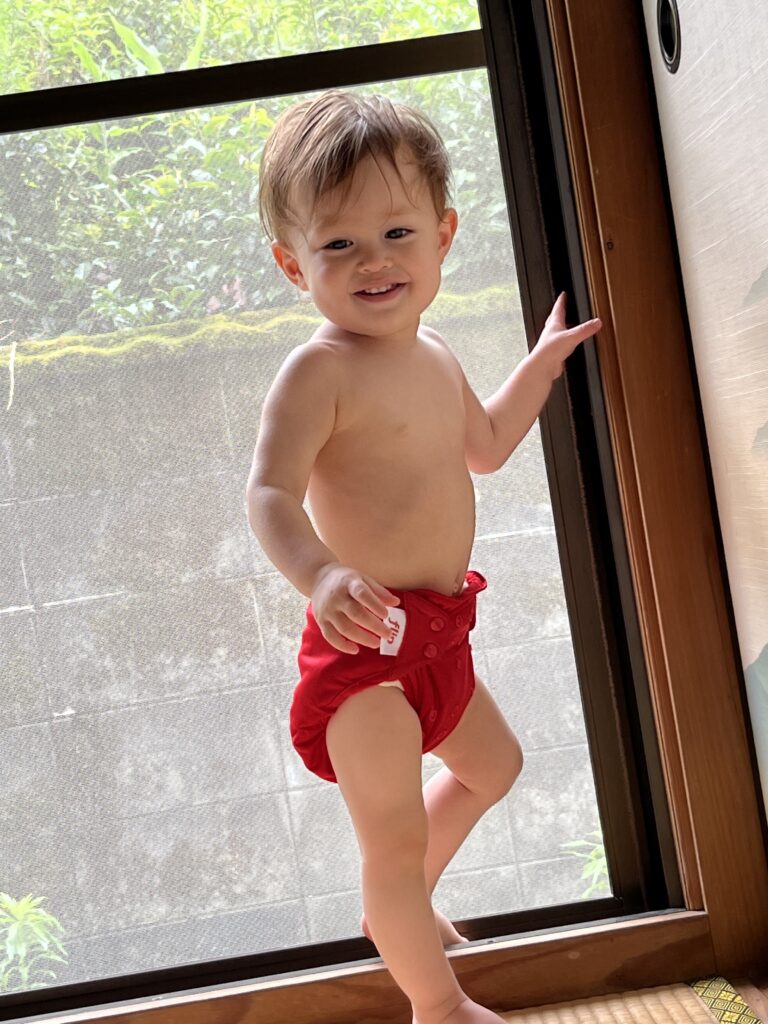
Q: Do you have any favorite cloth diaper brands?
A: I like the Cloth-eez brand prefolds just slightly more than the Osocozy brand due to the slightly different dimensions that seemed to fit our son better.
We have both regular cotton and organic cotton brand diapers, and the organic cotton prefolds seemed to hold less urine than the regular cotton (I’m not sure whether this is just due to the brands we purchased, or is normal??).
We felt that the organic cotton prefolds are more breathable for summer, and easier for transitioning to potty training. However, the regular cotton prefolds are our go-to for overnight diapering.
Thirsties and Osocozy brand diaper covers are my favorite as they seem to leak the least and look the cutest, but I love the variety of different brands!
Q: How is cloth diapering in Japan different from cloth diapering in other countries?
A: In Japan, there are some specific differences with laundering cloth diapers compared to other countries. First, most washing machines do not use hot water. Secondly, most people do not own drying machines.
As a result, it is important to find a way to get diapers dry and to kill bacteria to avoid mildew and build-up.
Washing with cold water has never seemed to cause problems for us, but it is helpful to air dry in the sun whenever possible to bleach the fabric of any stains, and to kill bacteria naturally!
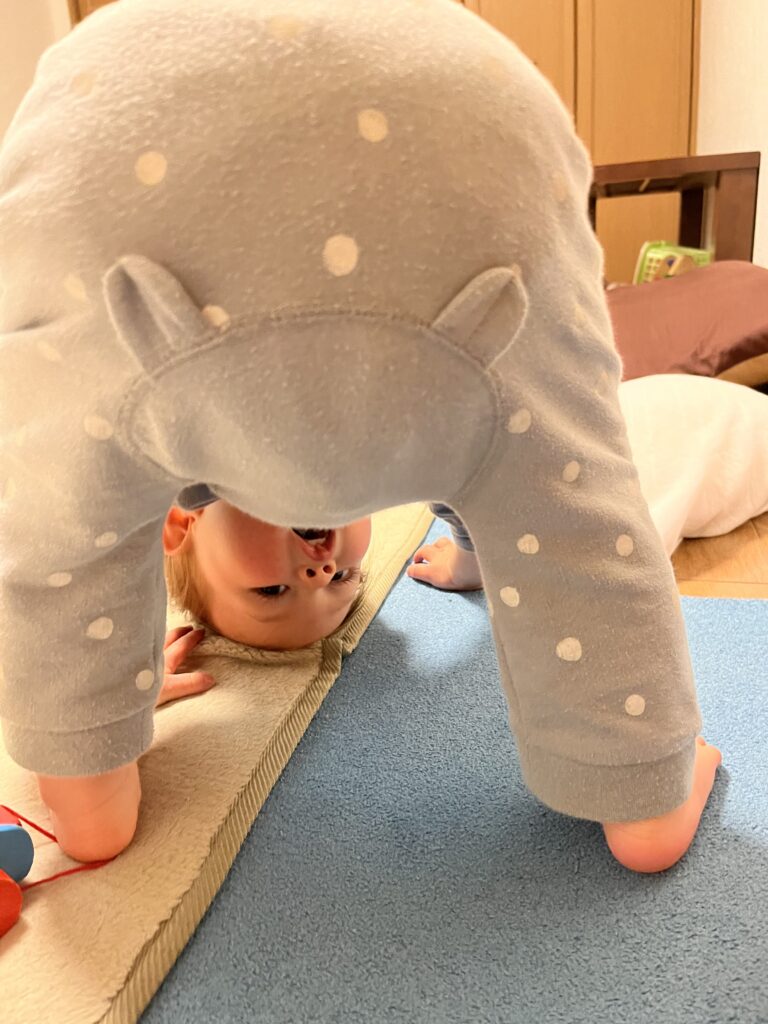
Q: How do you launder your cloth diapers?
A: This is our normal laundering schedule:
**Launder every 2-3 days when weather permits.**
- Wash in the washer first on a speed setting with no detergent. Try to wash as early in the morning as possible!
- Do a regular wash cycle with detergent. We use Arau Baby, and occasionally add some Oxiclean if diapers become too stained (if you can’t find Oxiclean, there is also a Japanese knock-off brand my friend found called “Oxishiny”).
- If weather is good, hang dry outside in the sunshine. If weather is poor but it’s hot, hang indoors near a window. If the air is damp and/or it’s cold indoors, you can use a dehumidifier in a closed room to dry diapers quickly.
If baby is still breastfed, you don’t have to worry about removing poop from diapers before tossing in the laundry. However, if baby has started solids, you will always want to remove/rinse off poop as much as possible BEFORE adding soiled diapers to the diaper pail to be laundered later.
Q: What additional products do you recommend purchasing if you plan to cloth diaper in Japan?
A: In addition to prefolds, covers, laundry detergent, an outdoor drying rack, and regular supplies such as rash cream and wipes, there are other supplies that can make cloth diapering easier!
We recommend buying diaper pails and wetbags to hold dirty cloth diapers until you are able to launder them. It reduces the smell in the house, and is more sanitary than sitting in a bucket! We have two Ubbi pails (one of them we found at a thrift store for 5$!).
We like the Ubbi pails because they are tall enough to hold a decent amount of diapers, easy to use, and we have no problems with smells leaking out.
If your baby is no longer breastfed, you might consider organic diaper liners to reduce clean-up.
We also use mini-wetbags in our diaper bag to store soiled diapers without leaking any mess / smell.
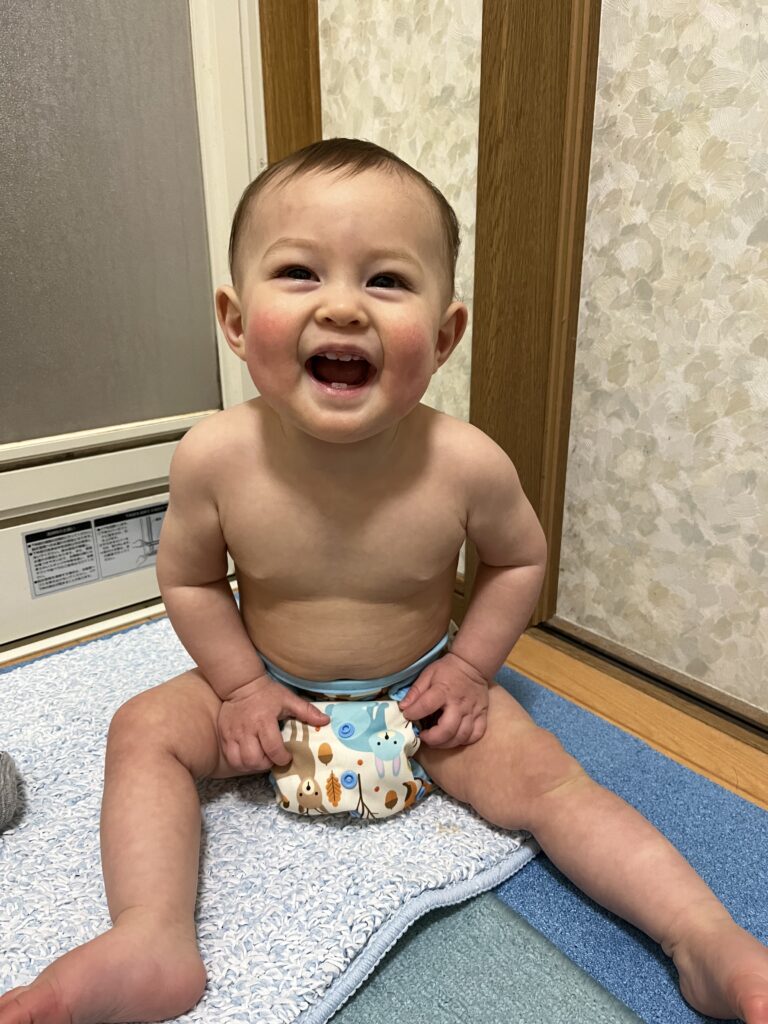
Q: Does cloth diapering really make toilet training easier?
A: Yes, absolutely! We hope to share more on this later in a post on our experiences with a gradual, gentle approach to early potty training. (:
Q: Is cloth diapering a huge time commitment and inconvenience compared to disposable diapers?
A: In some ways it might be inconvenient, and in other ways not at all! It really depends on what is important to you.. personally I have found cloth diapers to be more convenient than disposables because we experience far fewer leaks with cloth. I also don’t mind doing an extra load of laundry, so the time commitment is not a big deal to me!
Q: Do you use cloth diapers when you go out?
A: Most of the time, yes. (:
We always bring a handful of disposable diapers with us in case we run out of cloth. In addition, if we have someone watch our son who is not familiar with cloth diapers, we want to make sure disposables are on hand for their convenience.
However, most of the time we prefer to use cloth diapers when out because they just leak less! In the beginning we tried using disposable diapers every time we went out, and I can’t tell you how many times I was peed/pooped on during that time!!
We quickly switched over to cloth during outings, and we have not had any major leaking issues since then.
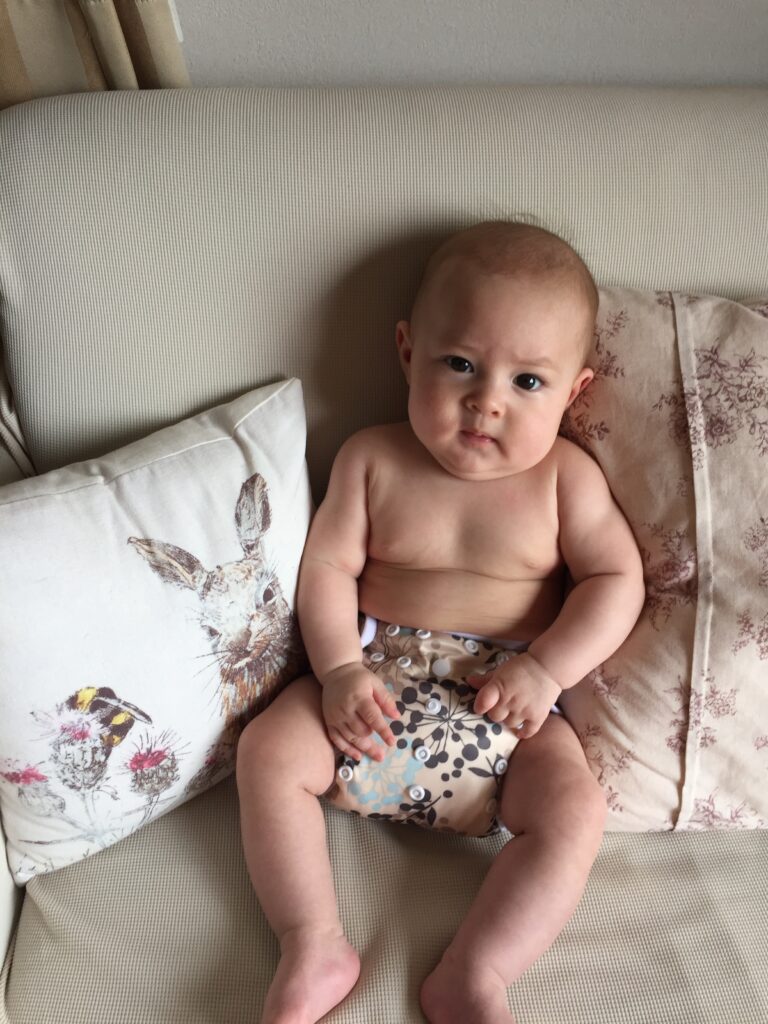
Q: What are some benefits of cloth diapering?
A: There are so many pros that make cloth diapering worth it..
If you have more than one child, cloth diapering can be a significant savings over disposable diapers!
More importantly, with disposable diapers you have chemicals sitting right against children’s skin, which can cause allergies and hormonal imbalances. Many people do not realize that disposable diapers, pads, etc., can be endocrine disruptors and even have effects on fertility!
As a baby, I was also allergic to disposable diapers, and often would get rashes until my mom switched to cloth.
This is NOT meant to shame people who use disposable diapers in any way, and cloth diapering may not be possible or desired for some families. Every family and child is different, and that’s okay!!
Still, it’s important to know what we are putting in/on our bodies, and how it can potentially affect us.
Are you new to cloth diapering? If so, I’d love to help you! Feel free to leave any questions below.
Or, if you’re a cloth diapering veteran, let us know your favorite products! (:
Photo credits: (c) theharunafamily.com

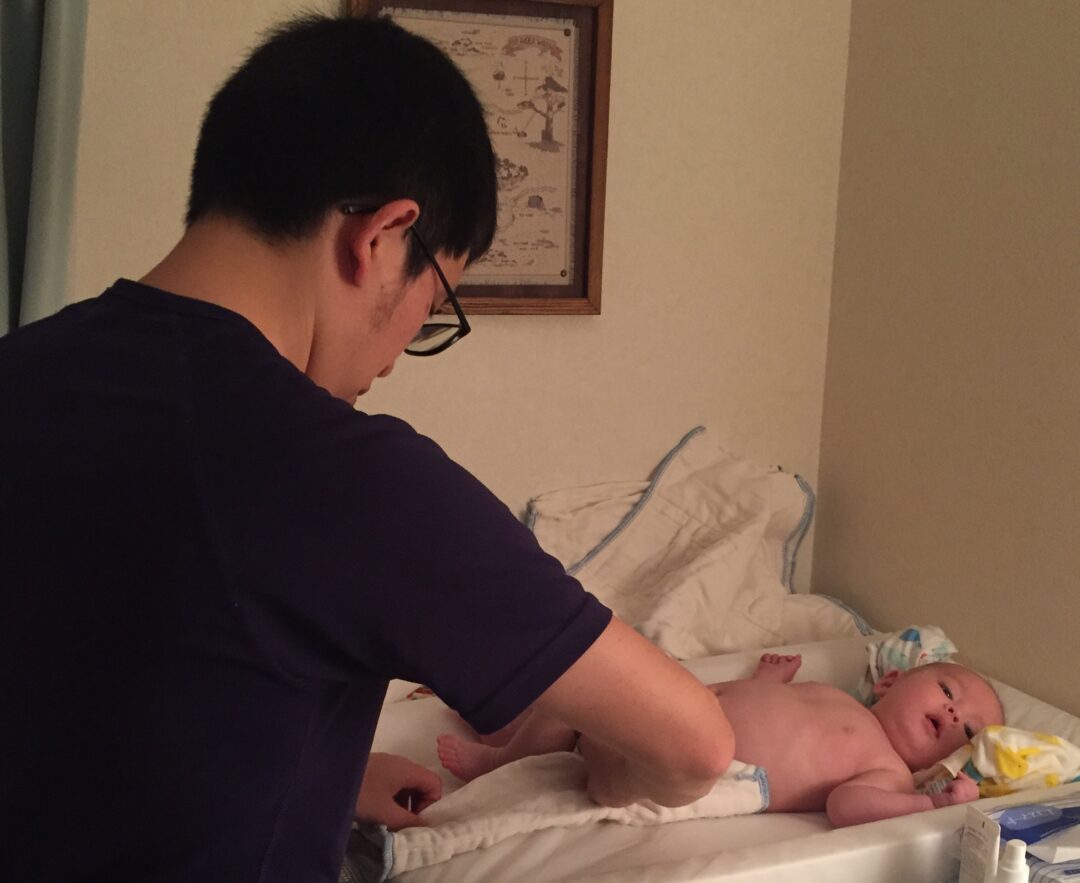

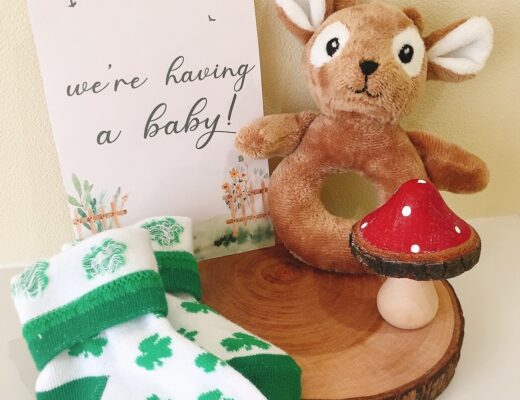
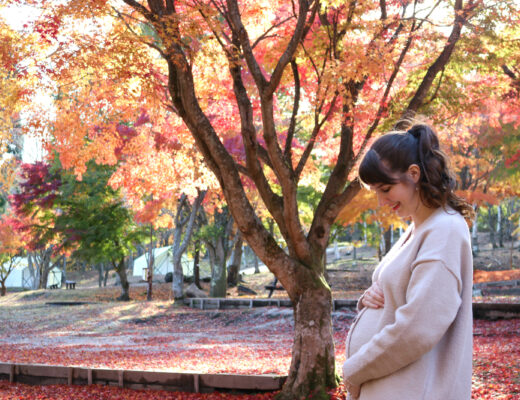
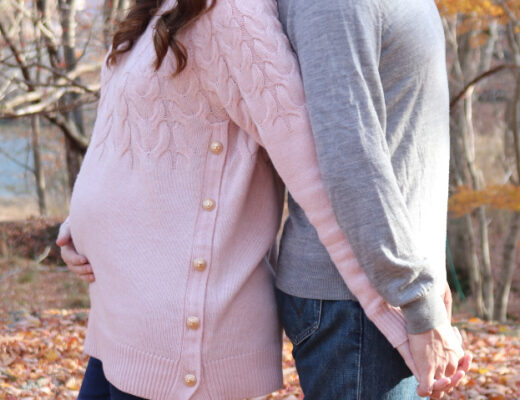
1 Comment
[…] we started cloth diapering our son from 3 months old (see here), which can help with the switch to potty training as baby can “feel” wetness, and will […]